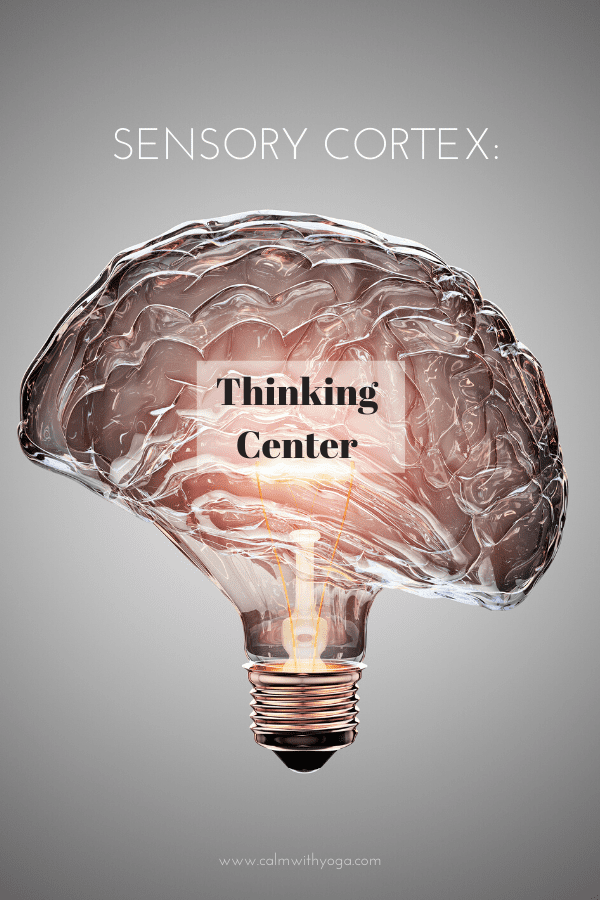– Carl Gustav Jung, Psychiatrist & Father of Analytical Psychology The more you understand your reactions and responses, the more metacognition you acquire. Metacognition refers to the development of an awareness and understanding of your own thought processes. It’s often referred to as “knowing about knowing” or “thinking about thinking.” In Yogic Philosophy, we come to acquire metacognition via the principle of Svadhyaya, or Self-Study. This act of observing the Self helps to elevate the Self. The more you can observe as if you were a neutral third person, the more you can uncover and see about the patterns that run you subconsciously. It is the way to make the ‘unconscious conscious’ as Jung wisely said. Understanding yourself better is the first step to shifting patterns, and you can’t change what you don’t know. So how do we know when we’re experiencing thinking-based (cortex-based) anxiety and/or emotion-based (amygdala-based) anxiety? In the book Rewire Your Anxious Brain: How to Use the Neuroscience of Fear to End Anxiety, Panic, & Worry, by Catherine M. Pittman, Ph.D. outlines the hallmarks of both types. Cortex-based anxiety is experienced by interpretations, anticipations, and obsessions. Amygdala-based anxiety is experienced by unexplained anxiety, rapid physiological response, unplanned aggressive feeling/behavior, inability to think clearly, and extreme responses. (42) Cortex Based Anxiety:
Interpretations – Our interpretations of situations, people, actions, and circumstances are based on our past experiences and the meaning we’ve assigned to what has previously happened to us. In this sense, our past taints the lens of our perceptions of the present (and future). Interpretations that lead to anxiety, worry, anger, frustration, and irritation then become patterns. The more we run these patterns the more automatic and subconscious they become. The more subconscious they become, the more they run us as a master would a slave.
Anticipation – If your anxiety is like mine, chances are you’ve developed really strong ‘negative’ anticipation brain pathways too. This means that you tend to expect the worst case scenario to occur. Your imagination works against you by helping you come up with every possible ‘bad’ scenario and you inefficiently use up energy and bodily resources by believing it and anticipating it.
Obsession – We use parts of our cortex for selective attention. When this becomes anxiety-based it leads to ‘tunneled concentration’ on a single object or thought, or selective objects or thoughts. We then initiate a neverending down spiral loop of incessant, ruminating thoughts we can’t stop, which can lead to actions we can’t stop.
Amygdala Based Anxiety:
Unexplained Anxiety – You feel anxious or any other uncomfortable strong emotion for no reason. You have trouble pinpointing the cause and can’t seem to find any logical clarity around why you feel how you feel.
Rapid Physiological Responding – We’ve all been there: heart-pounding, hot chest, sweaty palms, short breath, sick feeling in the tummy.
Unplanned Aggressive Feelings or Behavior – You snapped. Knee jerked. Lashed out for no apparent reason. It might have felt like you were not in control of your body. This is especially true in the case of unresolved unconscious trauma of any kind.
Inability to Think Clearly – As we’ve seen the amygdala can hijack other brain processes, including the cortex. It can impair our reasoning and logical thinking capabilities and cloud them with irrational emotions.
Experience of Extreme Responses – Similar to the unplanned aggressive feeling/behavior. You overreact. You act dramatically and in an unwarranted way given the situation.
The next time you find yourself responding in any of these ways, try and stop for a second and summon forth your metacognitive powers. Study yourself and observe your thoughts. Observe how you feel in your body. Notice your breath. Slowly you’ll begin to automatically discern which type of anxiety you’re feeling, which will help begin to shift and dissolve the feeling state because you’ll understand where it is coming from. That’s the first step. According to the late Dr. Karl Pribram, known as the “father of cognitive neuroscience,” the brain’s function is to store, analyze, and compare patterns. It is a pattern processing and pattern recognition system. (39) According to Dr. McCraty, “whenever we have a strong emotion and it goes along with an event, that pattern gets stored stronger; it’s imprinted stronger into our emotional memory.” (39) When a pattern match occurs with an old ‘negative’ emotional memory, the stress response is activated and the body begins producing an overabundance of stress hormones. This creates a vicious cycle.

